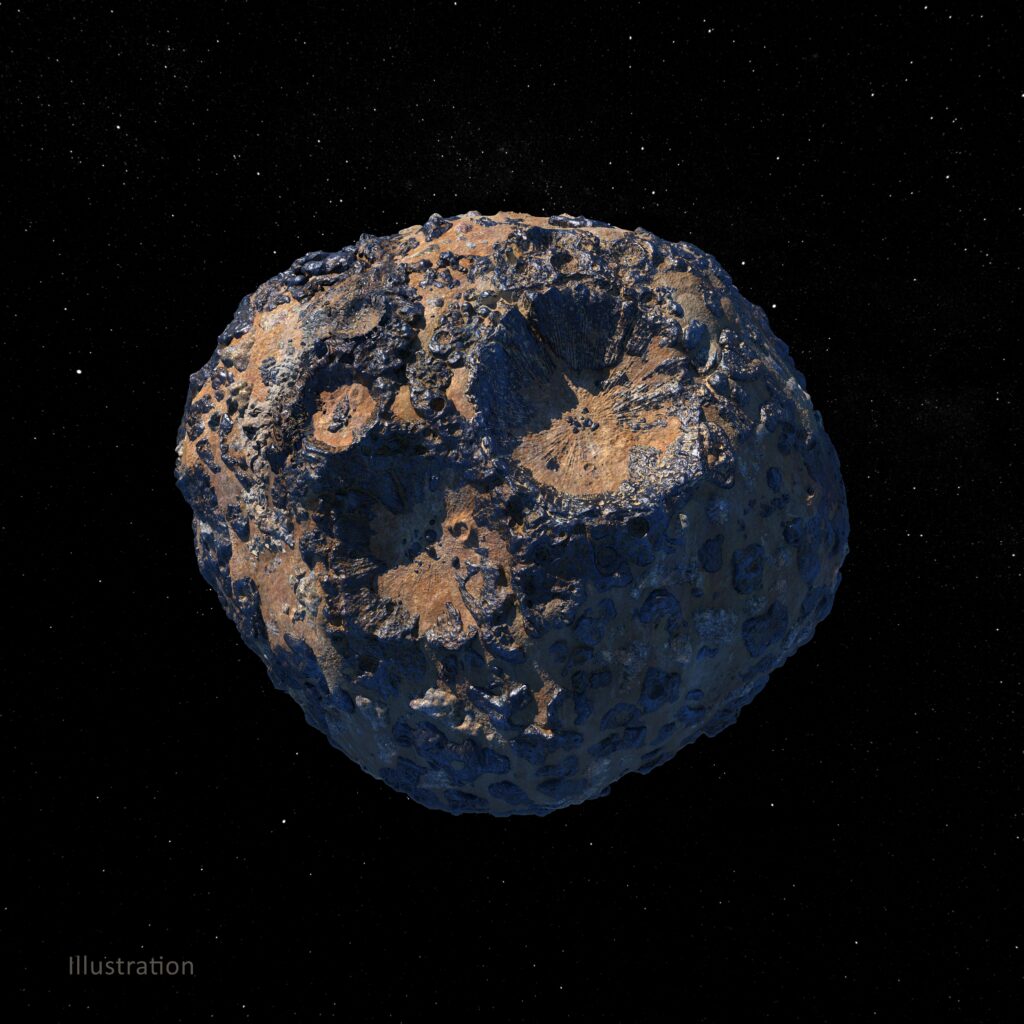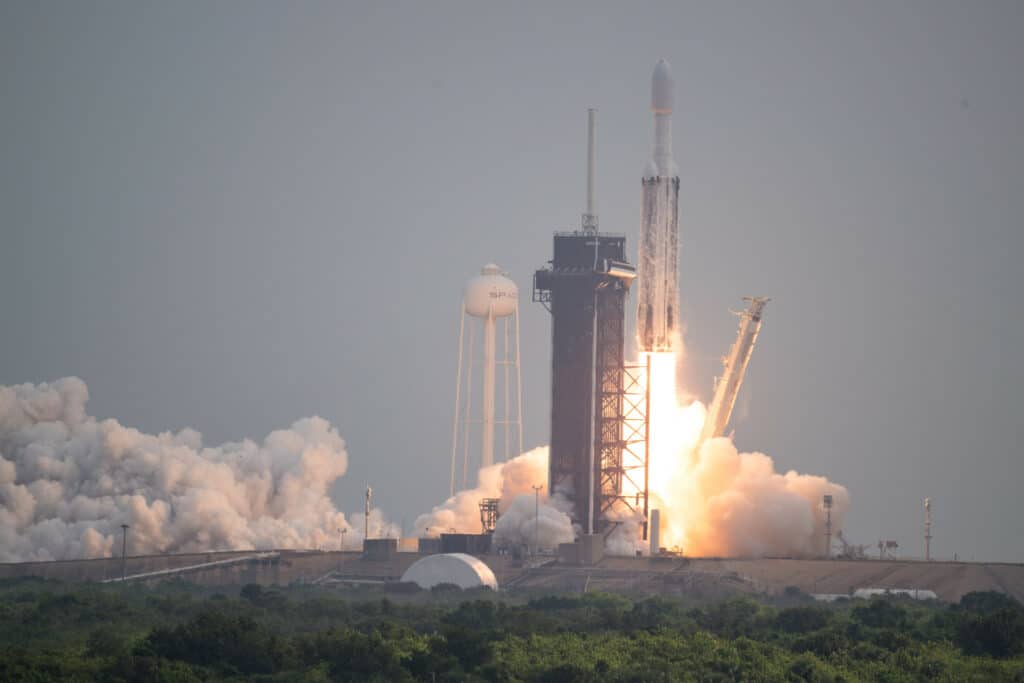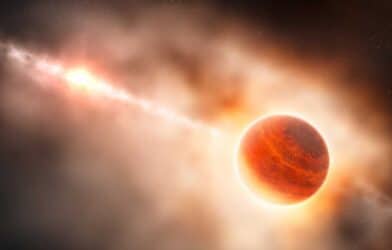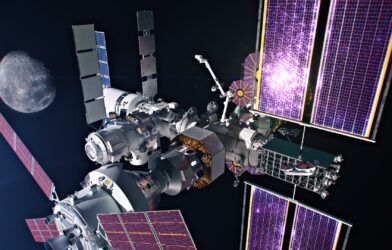In a historic launch, NASA’s Psyche spacecraft embarked on an exciting journey to explore an asteroid known as Psyche, and it could unveil essential insights into the formation of rocky planets. The spacecraft successfully lifted off at 10:19 a.m. EDT on Friday morning, riding high atop a SpaceX Falcon Heavy rocket from Launch Pad 39A at NASA’s Kennedy Space Center in Florida.
Pioneering Test of Deep Space Laser Communications
One of the most exciting aspects of this mission is the inclusion of NASA’s Deep Space Optical Communications technology demonstration, a revolutionary test of deep space laser communications. This cutting-edge technology could redefine how we communicate in space by providing significantly more bandwidth than traditional radio frequency communications.
NASA Administrator Bill Nelson praised the successful launch. “Congratulations to the Psyche team on a successful launch, the first journey to a metal-rich asteroid,” he said in a statement. “The Psyche mission could provide humanity with new information about planet formation while testing technology that can be used on future NASA missions.”
The use of deep space laser communications holds the potential to revolutionize how we transmit data across vast distances in space. It offers higher bandwidth, faster data transfer rates, and more reliable communication for future exploration missions.
Safe Start to Bold Mission
Just minutes after the liftoff, the rocket’s fairings separated, and about an hour later, the Psyche spacecraft successfully separated from the rocket, marking a significant milestone in the mission. Ground controllers anxiously awaited a signal from the spacecraft, and shortly after, Psyche commanded itself into a planned safe mode.
The spacecraft established two-way communication with NASA’s Deep Space Network complex in Canberra, Australia, at 11:50 a.m. EDT, and initial telemetry reports indicate that the spacecraft is in excellent health.
Psyched About Psyche
Psyche’s primary mission objective is to study the asteroid Psyche, a 173-mile-wide (279-kilometer-wide) metallic behemoth, which happens to be the only metal-class asteroid ever targeted for exploration. Scientists are particularly interested in this asteroid because of its high iron-nickel metal content, which suggests that it could be the remnant of a planetesimal, a building block of early planets.
By August 2029, the Psyche spacecraft will enter orbit around this enigmatic asteroid, commencing a 26-month science investigation. The knowledge gained from this mission could help us better understand the formation and evolution of rocky planets, including our own Earth.

Nicola Fox, associate administrator for the Science Mission Directorate at NASA Headquarters, expressed the mission’s significance. “By studying asteroid Psyche, we hope to better understand our universe and our place in it,” she said, “especially regarding the mysterious and impossible-to-reach metal core of our own home planet, Earth.”
To reach its destination in the main asteroid belt between Mars and Jupiter, Psyche employs solar electric propulsion, a highly efficient system that expels charged atoms, or ions, of xenon gas to generate thrust gently. During its journey, the spacecraft will utilize the gravitational pull of Mars as a slingshot to accelerate its progress.
“I’m so proud of the Psyche team, who overcame many challenges on their way to this exciting day,” said Laurie Leshin, director of NASA’s Jet Propulsion Laboratory (JPL). “Now the real fun begins as we race toward asteroid Psyche to unlock the secrets of how planets form and evolve.”
The Road Ahead for Psyche
The initial 100 days of the mission constitute a commissioning phase to ensure all flight systems are in optimal condition. This includes verifying that the electric thrusters are prepared for continuous operation over extended periods.
In about six weeks, active checkout of the science instruments, including the magnetometer, gamma-ray, and neutron spectrometer, and multispectral imager, will commence. The imager will capture its first images for calibration, targeting standard stars and a star cluster using various exposure settings and filters. The Psyche team plans to make these raw images publicly viewable online throughout the mission.
Moreover, the optical communications technology demonstration is set to power on approximately three weeks from now when Psyche is around 4.7 million miles (7.5 million kilometers) away from Earth. This marks NASA’s first test beyond the Moon of high-data-rate optical, or laser, communications. Though hosted by Psyche, the tech demo won’t relay data for the Psyche mission itself.
Dr. Prasun Desai, acting associate administrator of the Space Technology Mission Directorate (STMD) at NASA Headquarters, emphasized the significance of this test. “It’s exciting to know that, in a few short weeks, Deep Space Optical Communications will begin sending data back to Earth to test this critical capability for the future of space exploration,” he said.
A Multifaceted Team and a Bold Vision
The Psyche mission is led by Arizona State University, with NASA’s Jet Propulsion Laboratory (JPL) in Southern California managing overall mission responsibilities. Maxar Space in Palo Alto, California, provided the high-power solar electric propulsion spacecraft chassis.
NASA’s Launch Services Program, based at Kennedy Space Center, ensured the readiness and approval of the SpaceX Falcon Heavy rocket for the Psyche mission, underscoring its status as one of NASA’s most critical missions.












